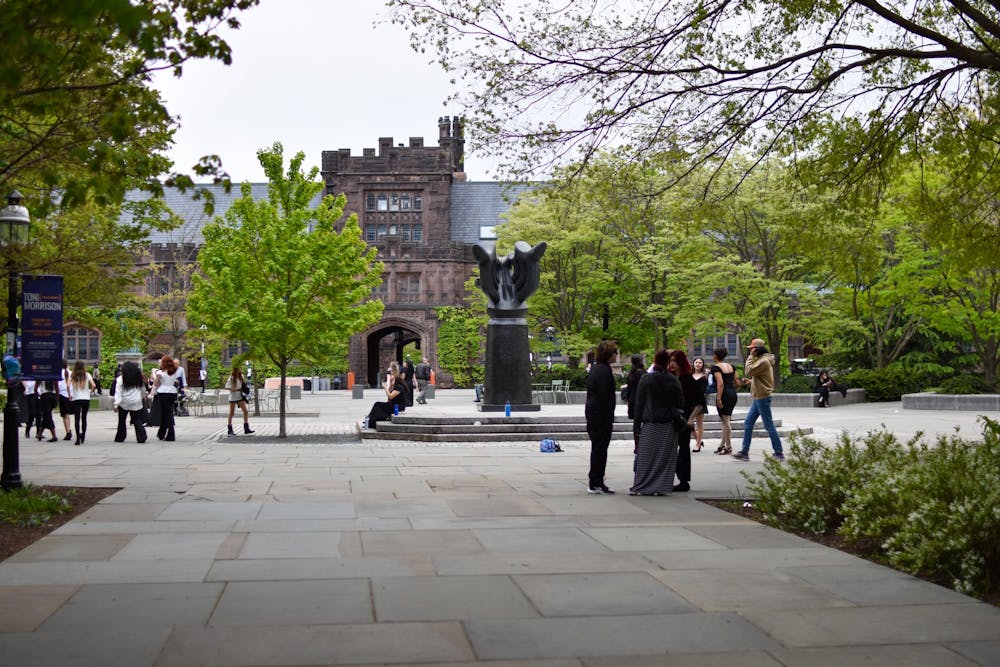Princeton University has 428 student organizations registered with the Office of the Dean of Undergraduate Students. Furthermore, the Office of Religious Life has 37 student organizations under its auspices and there are 100 graduate student organizations. The sheer number of student organizations reflects the influence that these groups wield on Princeton’s social and extracurricular life.
These organizations — especially affinity spaces, which have long been heralded as a way for minorities and people from lower socio-economic strata to feel at home — can provide an important sense of community, but they also separate us by our race, class, ethnicity, and other characteristics.
So, despite ample opportunities on campus to connect across class and culture, Princeton students often cluster in groups of similar kinds of people. As a result, we often inadvertently form bubbles closed to those who do not share our identities. Less formally and in everyday campus life, a clique-centered social life can be the norm. As students, we must work harder to reach out to those who are different from us and to form a more interconnected campus community.
There are numerous reasons as to why people gravitate towards groups of those with shared identities. Homogeneous pre-college environments can inform people’s social habits and high schools are increasingly becoming segregated. Additionally, transitioning to college, especially one like Princeton, is difficult, so fraternity with those who are similar to you is necessary in an environment that can feel intimidating. I have personally found deep personal and cultural enrichment in engaging with people who I am similar to, and these experiences have been important for fostering a sense of identity.
But while the need for these organizations and finding “your people” is needed and understandable, this tendency toward relationships with people based on shared traits can cause us to lose track of our broader campus community.
This dilemma is well documented. Princeton’s Adversity and Relationships in Context (ARC) lab found that across higher education, students interact less across social classes than would be expected given the diversity of their institutions. The cross-class interactions that did occur also tended to be of a lower quality than students’ same-class interactions. The low quality of these interactions might only further create a cycle of students not being inclined to engage in cross-identity interactions.
These findings shed light on the paradox that despite the diversity of universities like Princeton, their groups do not interact with each other well. In the status quo, diversity only means that diverse groups simply coexist in this institution. Robust engagement in a deep and meaningful way isn’t the norm — but it should be.
The lower quality of cross-class interaction runs counter to idealized notions of the University being a place where people experience transformation, encounter new ways of life, and expand their ability to connect with a variety of people. As columnist Ava Johnson recently wrote: “For Princeton graduates to be able to leave the Orange Bubble and be effective, insightful, changemakers in a diverse global community, they need to understand, experience, and learn in a diverse campus community.” The question is then: how does Princeton appropriately balance affirming diversity while also fostering active, deep, sincere, and meaningful integration across social barriers?

Some, like the late Harvard University professor of psychology and African American studies Dr. James Sidanius, have argued for universities to take a more active role in fighting “against the natural tendency for students to segregate themselves.” But the University’s actions can only go so far. It will be individual action rather than bureaucratic power that will foster genuine bridge-building.
While affinity and extracurricular groups continue to play a key social role on campus, we ought to make an effort to counter the tendency towards homogeneity by encouraging more inter-group events. Existing groups can make an effort to co-host events with one another, as is already done by Carl A. Fields Center Cross Cultural Dinners. Student groups should follow such a model and initiate events that bring people across race, class, and other identities together.
Academically or ideologically based student groups also stand to benefit from a culture of integration and collaboration. More informally, we should all take time to consciously reach out across the table to seek to bond with those different from us.
Such a move would encourage cross-cultural understanding and mutual empathy, something that would fully take advantage of its existing diversity. This would improve the social well-being of everyone. The Princeton community stands to be better, healthier, and stronger if it strengthens the cohesiveness of its diverse groups on a very personal level.

Contributing columnist Luqmaan Bamba is a freshman from Ghana and New York. He can be found playing soccer. He can be contacted at luqmaanbamba[at]princeton.edu.








